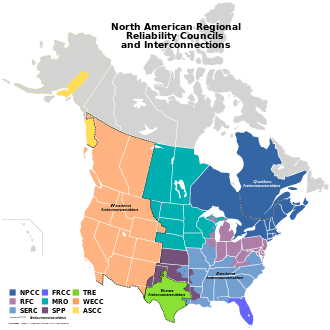Quebec Interconnection

The Québec Interconnection is one of the three minor alternating-current (AC) electrical grids in North America. The other two minor interconnections are the Texas and Alaska interconnections.
The Quebec Interconnection covers all of the Province of Quebec and operates at an average system frequency of 60 Hz. It connects 18 systems in the US and Canada to one electric utility company: Hydro-Québec. It is operated as an independent AC grid for physical reasons.[1] Because of its unique status, it is often functionally considered part of the Eastern Interconnection.
The Quebec Interconnection is tied to the Eastern Interconnection with four high-voltage direct current power transmission lines (DC ties), and with one variable-frequency transformers (VFTs) line, which isolate the unsynchronized AC frequencies of each side.
References
- ↑ "Control Area Concepts and Obligations". North American Electric Reliability Council. July 1992. Retrieved July 18, 2011.
Today, in NERC, there are four major interconnected areas: the Eastern Interconnection, the Western Interconnection, the Texas Interconnection, and the Québec Interconnection.